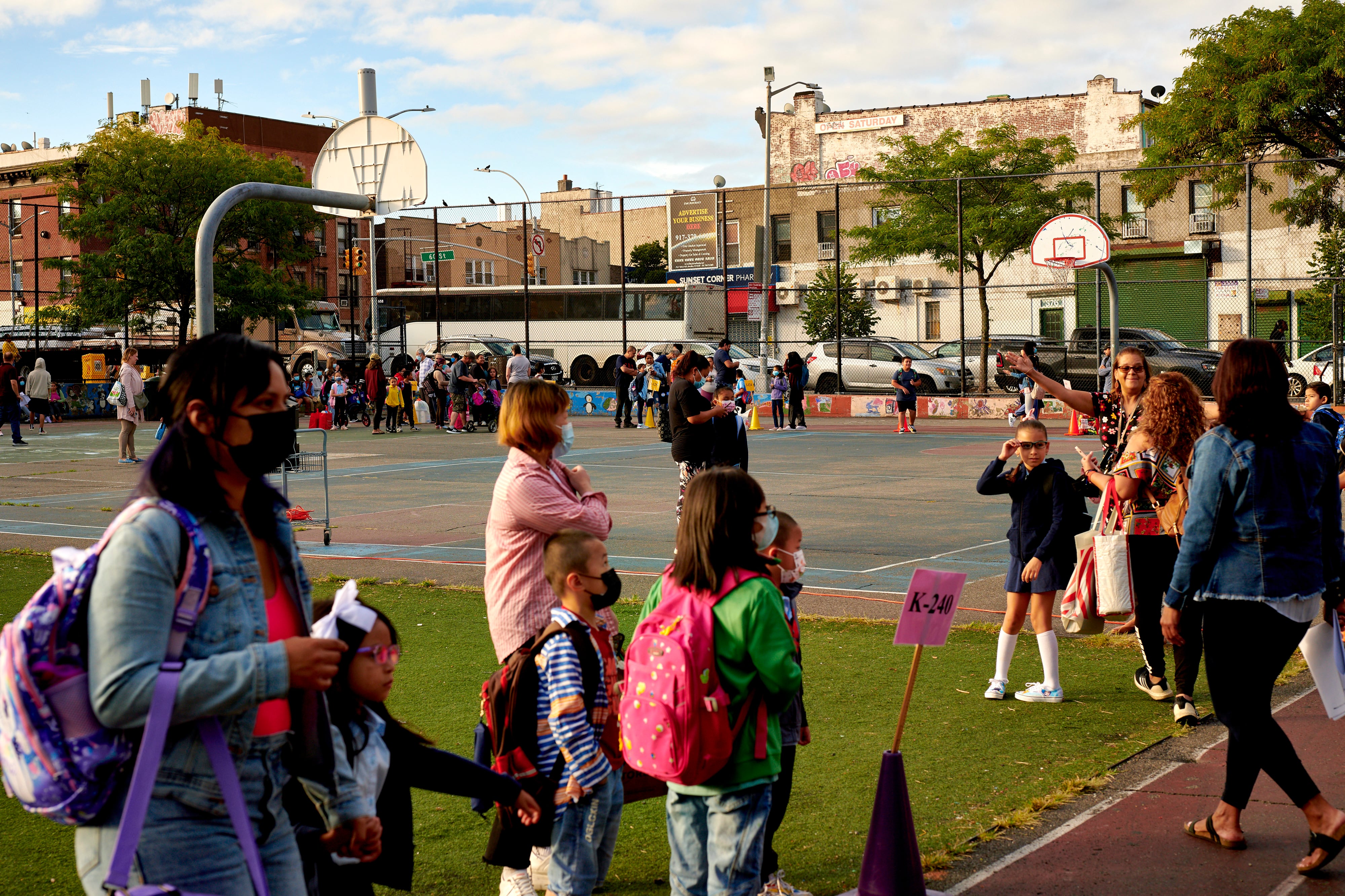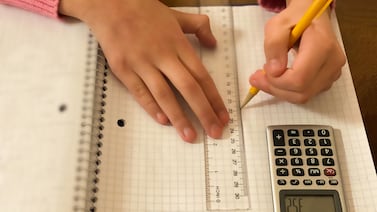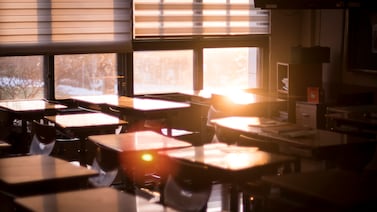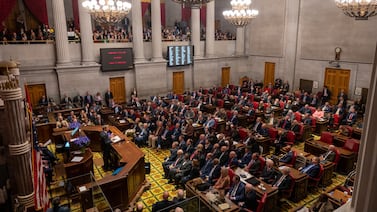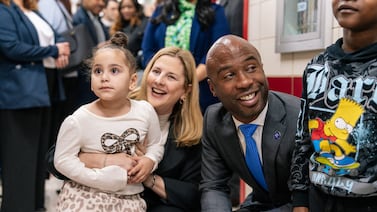Sign up for Chalkbeat’s free weekly newsletter to keep up with how education is changing across the U.S.
The polling company Gallup has been asking American parents the same question since 1999: Are you satisfied with your oldest child’s education? Every year through January 2020, between two-thirds and 80% said yes.
The pandemic upended many things about American schooling, but not this long-standing trend. In Gallup’s most recent poll, conducted late last year, 80% of parents said they were somewhat or completely satisfied with their child’s school, which in most cases was a public school. This was actually a bit higher than in most years before the pandemic. A string of other polls, conducted throughout the pandemic, have shown similar results.
“Contrary to elite or policy wonk opinion, which often is critical of schools, there have been years and years worth of data saying that families in general like their local public schools,” said Andy Smarick, a senior fellow at the Manhattan Institute, a conservative think tank.
“It would be natural to assume that in 2020, 2021, parental support for schools would have cratered,” said Smarick. “But it didn’t.”
But that’s not the prevailing narrative that has emerged. Instead, many commentators have seized on another part of the Gallup poll: Only 42% of American adults are happy with the country’s public schools — this figure has dropped several points since 2019.
“The last few years have been historically convulsive ones for education in America,” a recent New York Times Magazine piece said. Tellingly, satisfaction with public schools had dropped to “a 20-year low,” the story continued, citing Gallup. Some outlets implied or outright stated that the declining view of schools was driven by parents. An article in the conservative news outlet the Washington Free Beacon, for instance, mischaracterized Gallup’s results to claim that parents’ satisfaction had “plummeted.”
In reality, Gallup’s poll suggests a divergence between parents’ views of their children’s schools versus the public’s view of the nation’s schools: There was a startling 38-point gap between the two — which had also hit a 20-year record.
This and other data suggests that dissatisfaction with American public schools — and the policy changes that have resulted — has not been driven by most parents’ own experience with public schools.
Despite pandemic upheaval, most parents say their schools are doing fairly well.
Gallup’s finding is not an outlier. A Pew survey last year found that over 90% of parents were at least somewhat satisfied with the quality of their child’s education. A New York Times poll found that 77% were satisfied. Focusing just on parents with children in district schools, Education Next reported that 85% were at least somewhat satisfied; more recently EdChoice found that 84% were.
“Despite all the disruptions of the past two years, there is no sign of a pandemic-era drop-off in parents’ positive views of their children’s schooling,” wrote Gallup researcher Frank Newport. “Parents remain solidly positive about their kid’s quality of education — as they have been for over 20 years.”
It’s a striking finding in light of the massive upheavals to American schooling since the pandemic, which led students to fall behind academically. There have also been pitched debates about how schools should teach about race and gender. What could explain this? Local schools may have taken parents’ preferences into account in how they approached the pandemic and what they teach. Smarick said that in general people also tend to give institutions that they interact with directly, including schools, the benefit of the doubt.
“You know what they’re dealing with. You know what they’re trying to solve,” he said.
Polls do show that parents whose children attend private schools tend to be more satisfied than those in public schools, a pattern that existed before the pandemic. Certainly some parents aren’t happy with public schools, and have likely become more energized since the pandemic. And even parents who give decent marks to their child’s schools often say they could be better.
Dawn Delfín joined her school’s parent teacher association after her son entered kindergarten in the fall of 2020. The schools in Albuquerque, New Mexico, were still only offering virtual instruction. She supported that decision and sympathized with the challenges schools faced, but was frustrated by both the communication from the school and the quality of online instruction. “They did their best,” she said. “It was never going to be ideal, but it could have been handled better.”
In the years since, she’s been quite happy with her son’s school. She’d give it a B+ or A-, she said. It’s been “mostly great,” said Delfín, who is now president of the New Mexico PTA. “The teachers are excellent. They work hard.”
The polling results may seem surprising since there has also been an unprecedented decline in students enrolled in public schools. Between 2019 and 2021 the number of students attending public schools dropped by nearly 3%, from 50.8 million to 49.4 million. (More recent data is not available nationally.) Some of this reflects falling birthrates and immigration, while other children have shifted to private or home schooling. There’s also been a shift within the public school system from district to charter schools.
Some see this as at odds with the polling data. “While survey respondents express that they’re generally satisfied with how public schools responded to the pandemic, the enrollment numbers reveal a very different story,” wrote Frederick Hess, a senior fellow at the American Enterprise Institute, a conservative think tank. Satisfaction rates may also be higher because families moved their kids into schools they were happier with.
Although the enrollment shift is historically large and may prove disruptive to school districts, it still constitutes a small fraction of the nation’s children. This is consistent with the polling data, which shows that a small but meaningful chunk of parents — comprising millions of people — were dissatisfied with their child’s school. Moreover, much of the enrollment shifts came not from students who were already attending public school, but those in early grades who were entering school for the first time. “I would call these modest changes in school enrollment compared to what it could have been,” said Smarick
Those without schoolchildren are particularly unhappy with public schools.
Surveys actually show that it’s people without school-age children who are especially dissatisfied with public schools.
A recent EdChoice survey found that 57% of parents said their local school district was moving in the right direction, which was 10 percentage points higher than in January 2020, before the pandemic. (This is a bit different from the other parent surveys in that it was not asking about parents’ own experiences directly.) But among non-parents, only 29% said the local schools were on a positive trajectory.
This same gap between parents and non-parents has also showed up in polls by Education Next and the New York Times. The views of those without school-age children may be shaped by news coverage, which has advanced the narrative that schools are in disarray and parents are upset.
Nevertheless, the perception that parents have turned against public schools has justified a slew of proposed and actual policy changes. Republican-led states have passed new curriculum restrictions and expansive school choice programs under the banner of advancing parents’ rights. The polling satisfaction data does not speak to parents’ views on these various policies. But it does indicate that these changes are not a response to widespread parental unhappiness with public schools.
Delfín says that while she’s seen anger directed at schools on social media, she hasn’t heard much about it from parents she knows. “I really don’t see the same thing translating in everyday life,” she said. “Most families I know have their pluses and minuses about school and that always has been and always will be.”
Matt Barnum is a national reporter covering education policy, politics, and research. Contact him at mbarnum@chalkbeat.org.

